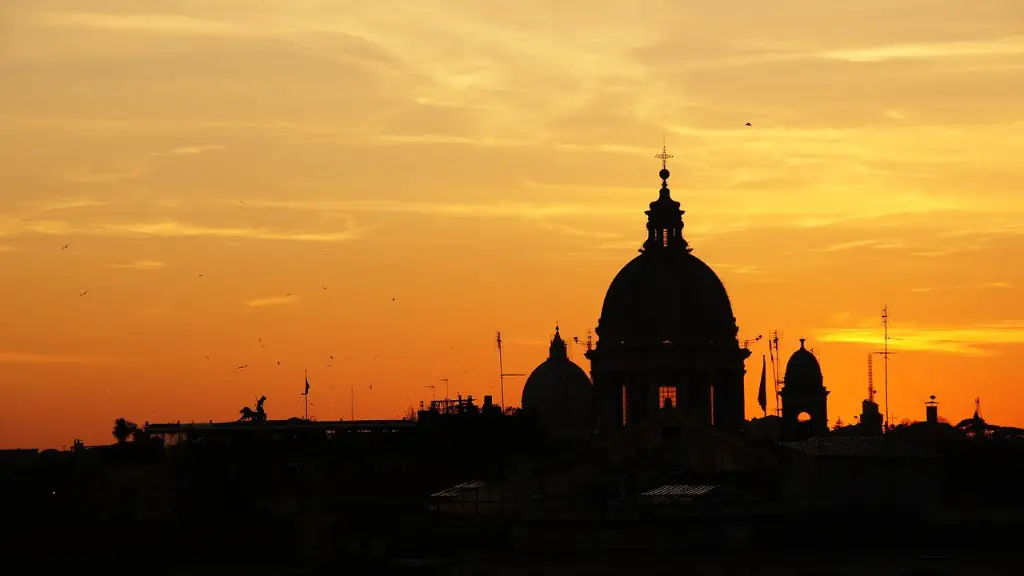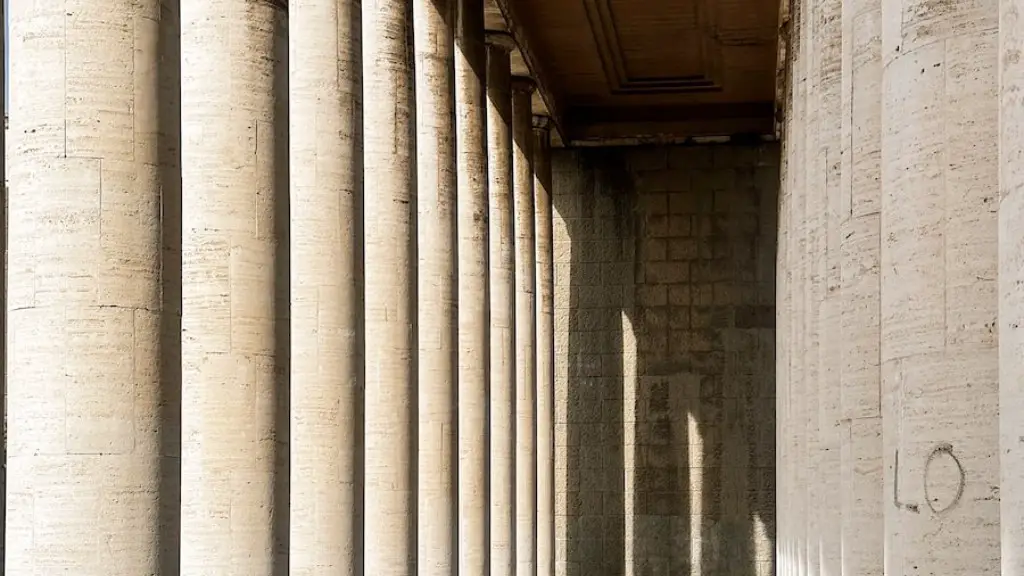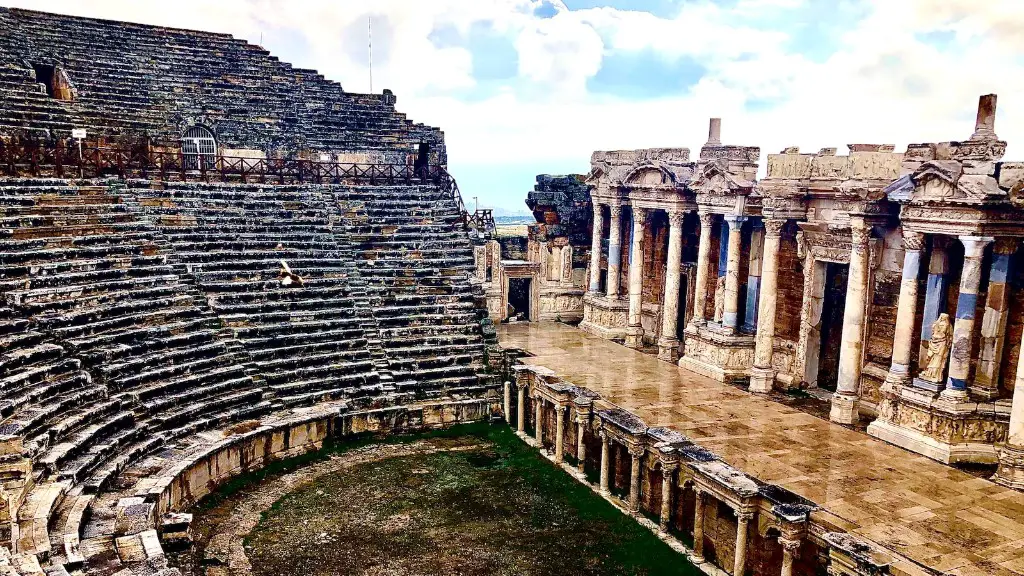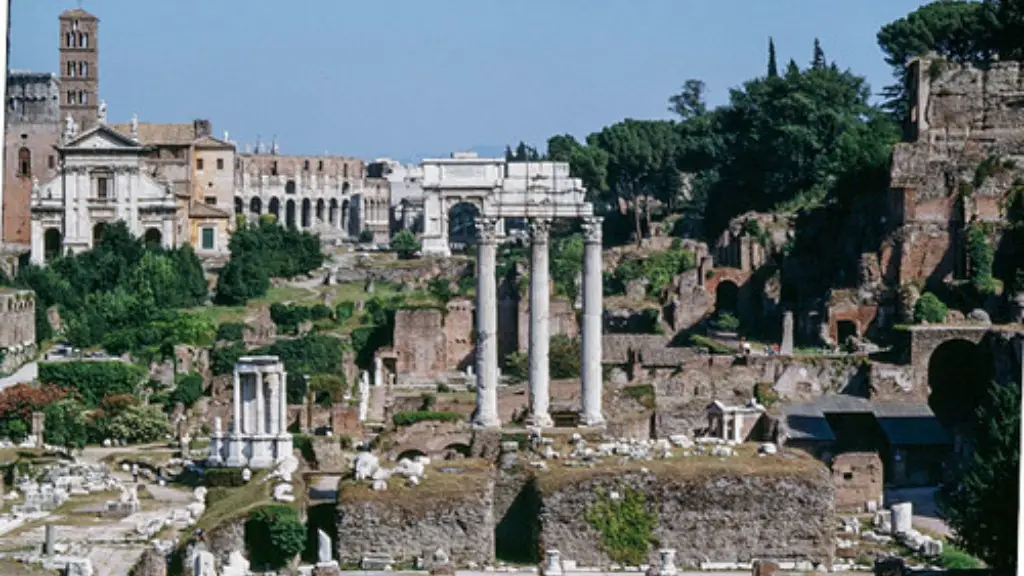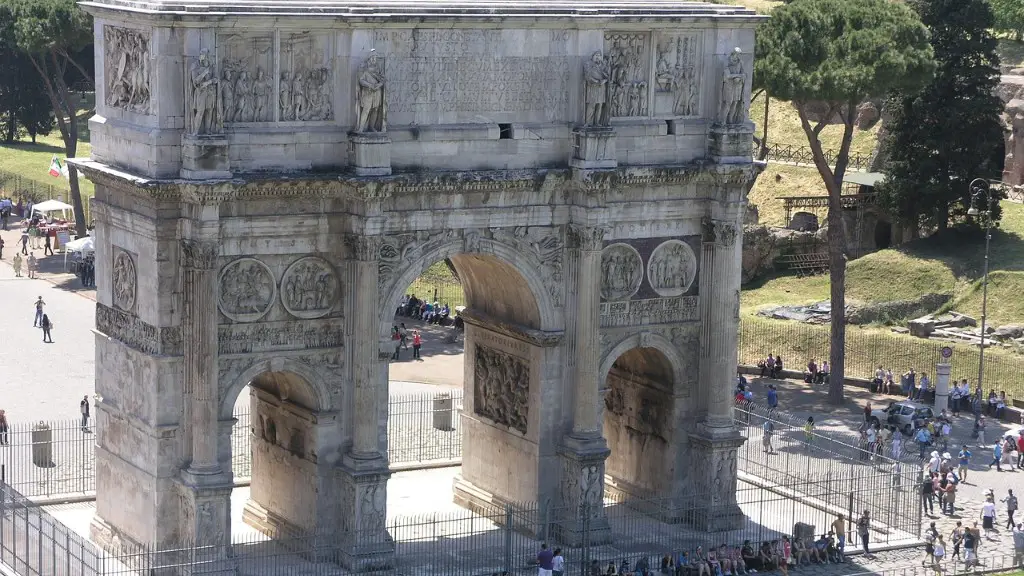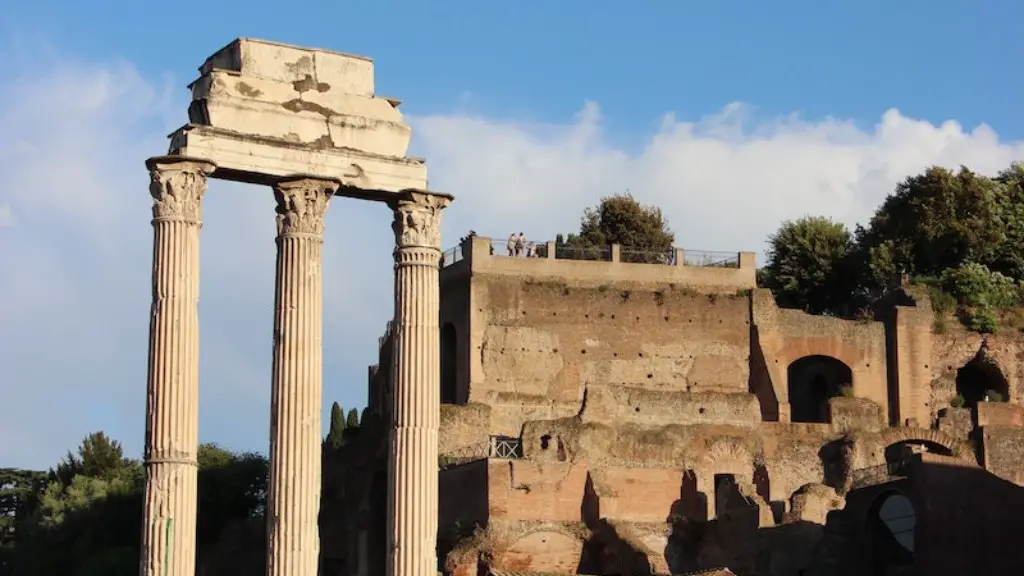Accommodation for Ancient Romans
Living in Ancient Rome was a complex endeavor. The mighty empire was densely populated and housing was at a premium. Ancient Roman citizens demanding sophisticated living arrangements, while the majority of the population often had to rest in primitive conditions. Ancient Roman housing facilities provided much more than accommodation and were the basis of development and progress during the time.
Ancient Roman citizens used a diverse range of housing options, the most popular of them being the insula. Insula is Latin for “island” and it referred to a large, multi-story apartment block, on which multiple dwellings were built in succession. These apartments were often tall and narrow, with several storeys, multiple dwellings and shared access to stairs or elevators. Most of these apartments provided basic living arrangements, and were often overcrowded and noisy. Such public housing blocks were popular among commoners, who could not afford larger and better-quality accommodations.
Patricians, the noble class in Ancient Rome, usually used domus as their living arrangements. This was a private house with upscale facilities and amenities and was usually owned by one family. They were built in spacious designs with gardens, often decorated with marble sculptures, beautiful paintings and pottery. Such houses were generally large and included several rooms, often furnished with the most sophisticated Roman furniture. Domus also had servants that prepared their food and maintained the house.
The wealthy citizens often built their own villas outside the city, with their own gardens and workers. Such villas were built in unique designs and were equipped with central heating and other luxuries. In fact, some of these villas were so large that they included their own bath complexes, leisure centers and temples. Rich Romans spent their free time here, relaxing and enjoying the good life.
The wealthiest citizens often built their homes on the seven hills of Rome, in order to take advantage of the best views and facilities. This kind of luxurious lifestyle was only possible for the rich in Ancient Rome, while the common people often lived in rudimentary conditions. Commoners without much money often had to settle for cramped, single-room apartments, which could be found in areas all over the city.
The government also had its own accommodations, such as barracks and military bases, where soldiers usually stayed. Such places provided minimum living arrangements, mostly dormitories and barracks. In addition, there were communal spaces, like public baths, public parks, theaters and arenas, which were open to all. These places were often used as meeting places and spaces for relaxation.
In Ancient Rome, the concept of affordable housing was virtually non-existent. Wealthy citizens lived in luxury, while commoners often had to settle for rudimentary housing facilities. The government, on the other hand, provided basic housing for citizens who needed accommodation. Although Ancient Roman housing might have been primitive compared to today’s standards, it played an important role in the development of the Roman Empire.
Education
Education in Ancient Rome was a privilege only available to the wealthy, as most citizens had to work full-time to afford the cost of living. Poor citizens had no hope of getting a higher education, and primary education did not exist. The government was the main source of education and offered courses such as agriculture, engineering and other technical skills, which were taught by experienced teachers and educators. The wealthy, on the other hand, had access to private schools, which provided education to the elite. These schools often had luxurious facilities, well-equipped classrooms and experienced teachers.
Higher education was available in the form of primary schools and universities. The schools were the equivalent of today’s secondary schools and focused on math, logic, and politics. The universities were a step higher, open only to the privileged few. These universities were known for teaching a variety of disciplines, including literature, business, philosophy, science and mathematics.
The educational system in Ancient Rome was also unique in its approach to physical education. Athletes were seen as a model for the Roman people, and physical training was a part of the curriculum. Education in Ancient Rome also focused heavily on mental activities, such as the memorization of facts, which would be necessary in order to advance in the world. People would also be educated in social responsibility and the importance of serving the state and the community.
In essence, education in Ancient Rome was based on the principles of social class and privilege. Only the privileged few had access to higher education, while the majority had to content themselves with the basics. The wealthy and powerful held the best positions in society and had the most rights and privileges. This created a clear division between the classes, which would still have an effect on Roman society in later times.
Entertainment
Entertainment in Ancient Rome was a form of public expression and celebration. Full of colour and pageantry, entertainment for the people of Rome was intended to evoke feelings of joy and excitement. The Roman government was in charge of all public entertainment, and the most popular entertainments included chariot racing, theatre performances, public performances and games, and feasts.
The most popular event was chariot racing, held in a huge arena known as the Circus Maximus. This was a public spectacle, where people would come from all around the city to cheer their favourite teams. In addition, there were plays and performances, usually comedies or tragedies. Actors would perform in front of the large crowd, often accompanied by music and other atmosphere-building devices.
Public games, such as gladiator contests, were also extremely popular. In these events, two or more gladiators would fight till the death in order to entertain the public. This kind of entertainment was dangerous and risky, but it created an atmosphere of excitement, fear, and awe. The gladiator contests were at the heart of the Roman entertainment system, and were seen as the ultimate form of entertainment.
Finally, there were feasts and banquets. These were more private affair and would usually involve different classes of people. The nobility and the wealthy would partake in luxurious dinners and banquets, served on beautifully crafted plates and cups. The poorer classes, on the other hand, could only afford basic meals, often consisting of simple bread, cheese and fruits.
It is clear that the entertainment scene in Ancient Rome offered all kinds of options, from luxurious dinners to dangerous gladiator fights. It was a society with a clear division between social classes. Although the wealthy held the most power, commoners were also able to enjoy public performances, chariot races and other forms of entertainment.
Healthcare
The healthcare system in Ancient Rome was fairly advanced for its time. Although there were no hospitals in Rome, there were private and public doctors who provided medical care to the citizens. The private doctors were often reserved only for the wealthy, while the public doctors provided free or subsidized care for impoverished citizens. These doctors often relied on methods such as charms and herbal medicine in order to treat their patients.
Though it was rudimentary by modern standards, there was a well-established network of medical schools and academies in Ancient Rome. These schools provided medical education to citizens and often included advanced medical techniques such as surgery, pharmacology and anatomy. Medical knowledge and techniques were passed down from generation to generation and were often handed down in the form of medical books and scrolls.
The Roman government also had its own set of medical practices. In the event of a major disease epidemic, the Roman government would send out doctors and physicians to provide medical assistance and treatment. They also had various methods of preventing diseases, such as cleaning the streets and providing clean water to citizens.
Finally, the Roman government had its own set of public health regulations. These regulations would focus on sanitation and cleanliness, and were aimed at preventing diseases from spreading. The Roman government also had its own system of public health insurance, offering financial protection in the event of an illness or injury.
In summary, the healthcare system in Ancient Rome was relatively advanced for its time. Although there were no hospitals, there were private and public doctors who provided advanced medical care. The Roman government also had its own methods of healthcare regulation and prevention, as well as its own system of public health insurance.
Architecture
Architecture in Ancient Rome was a vast and complex field. One of the most iconic symbols of the Roman Empire, the Colosseum, has become a symbol of Roman greatness and grandeur. This enormous amphitheatre was build by the Emperor Vespasian around 80 BC and was used for spectacular events like gladiator matches and public performances. Other important Roman structures include the Pantheon, the Baths of Caracalla, and the Temple of Saturn.
In general, Roman architecture was an example of balance and symmetry. Buildings often featured arched ceilings, engaged columns and other features, which emphasized strength and aesthetic harmony. Roman architects were also able to transfer water from one place to another, which allowed them to create public baths, aqueducts and other advanced systems.
Roman buildings often featured intricate and elaborate decorations. Paintings, sculptures and statues were often used to emphasize the importance of the structure and its location. For example, sculptures of gods were often put in front of temples, and monumental statues were displayed in public spaces.
Roman architecture had a lasting impact on European society. Its influence can be seen in cities around the world, as many of its iconic structures are still standing today. In addition, the principles of Roman architecture, such as balance and symmetry, have been adopted and adapted by modern architects, in order to create beautiful, durable and functional buildings.
Culture and Religion
Religion and culture played a major role in the lives of Ancient Romans. The state religion was polytheism, a belief in multiple gods and goddesses. The primary gods were Jupiter, Juno and Minerva, and were worshiped throughout the empire. There were also other public gods, such as Mars and Apollo, and many other deities.
Religion in Ancient Rome was seen as a societal practice, and was often used as a way to bring people together. The Romans believed that their gods and goddesses provided them with protection and guidance, and would often hold festivals and ceremonies in their honor. Religion also had an impact on the structure of Roman society, with certain social classes holding certain privileges and benefits, based on their religious beliefs.
Ancient Roman culture was highly influenced by their religion. The country’s literature, art, theatre and architecture all reflected the Roman religion. Many of the rituals and beliefs of the Roman religion still influence the culture of modern Europe. In addition, Latin, the language of the Ancient Romans, is still used in many countries today.
Lastly, Roman culture also had a strong influence on science and technology. Many inventions, such as the arch, the aqueduct and the calendar, can all be traced back to Ancient Rome. In addition, the Romans were pioneers in the fields of engineering and mathematics and their innovations have been crucial in the development of modern society.
In summary, culture and religion in Ancient Rome had a profound effect on the lives of its citizens. Religion was a source of comfort and protection, while the culture of the time shaped the way of life of the people of the empire. Roman culture and religion have also had a lasting impact on Europe and the world, influencing many aspects of our society even today.
